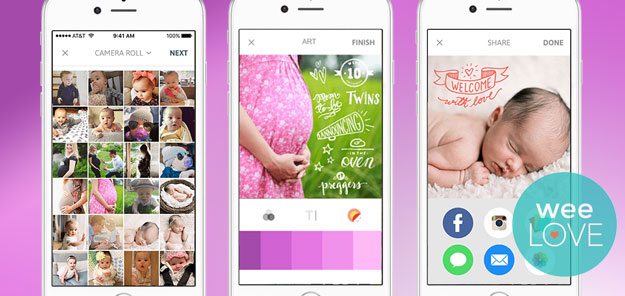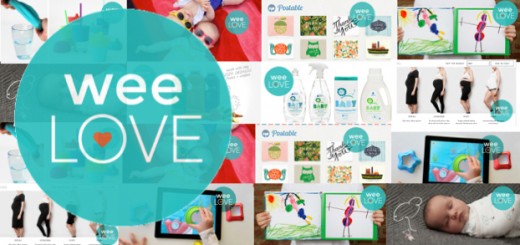6 Things to Consider When Picking Apps for Kids
Is your toddler app-obsessed? M.J. Prest, the blog editor for Tiggly, shares tips on selecting the most engaging apps that help kids grow and learn.
There are hundreds of thousands of kids apps for sale, and 65,000 of those purport to be educational. But how do parents know if what they’re downloading has real learning value? Before you hand over the iPad, check out these six tips for confidently selecting a trustworthy learning app for your kids.
1. Is the app engaging?
Does the app look like a collection of random buttons that produce meaningless noises, colors, and motions, or will it actively engage your child? Active engagement means to think, solve problems, create things, express emotions and opinions, and discover new ideas about a novel concept, or even about themselves. Kids as young as 18 months can do all of that! Apps that help your child learn language, socially engage with others, and co-play with siblings or friends are all great for cognitive development.
2. Does it make good use of touchscreen technology?
The best apps are the ones that tap into the unique advantages of tablet technology to provide a rich experience that is not possible to create on TV or on paper. Apps that are basically digital versions of multiple-choice worksheets or that simply stream videos are not interactive and don’t engage children in the special way that is unique to tablets. But real learning apps are carefully designed to encourage children to create content and express themselves by telling stories or making drawings, enrich their pretend play, or allow them to interact with concepts they cannot easily engage with in the real world (like traveling through space or into organs in their body). These highly interactive apps are a good bet.
3. Does the app protect your child’s information?
Apps for kids should never embed in-app purchases, ads, or outbound links that kids can access. App developers for children should also never seek marketing information from minors. The best apps comply with the Children’s Online Privacy Protection Act, or COPPA, and provide an easily understandable privacy policy. (Tiggly is proud that we pass all of these standards, which is why we are featured in Apple’s Kids App Store.) Also, in iOS 8 — the latest software update for iPads — parents will receive an email notification about any in-app purchases before they go through. It’s a welcome added layer of security for the family iPad!
4. What is the goal of the app?
Some badly-designed learning apps are simply a collection of buttons and the role of your child is either to keep tapping on random things to see them move or make noises, or to listen to a narrator and then tap on a button to advance the game. The first type is open-ended play with no meaningful learning experience; the second type is essentially a multiple-choice quiz without useful feedback. Instead, an app should offer young learners a real and interactive experience, whether it’s an open-ended experience or a structured one toward a certain goal. The elegance of apps lies in how they empower a child to try different things and experience the cause of his or her actions in that world, whether it’s a “correct” action or an “incorrect” one. Knowing why a decision or an answer is incorrect is much more important than just knowing it’s not correct.
5. Does it adapt to your child’s progress?
You may have heard of “adaptive learning,” a big buzzword in edtech. It means that as your children master one skill set, the app recognizes their progress and gives them more complex problems to solve. If they need a little more time in one area, it recognizes that as well and gives them the guidance they need on that subject. Adaptive learning on a mobile platform helps teachers go above and beyond what they were previously able to do, which is why it’s at the forefront of modern teaching practices.
6. Will your child want to play it?
The best apps are the ones that kids return to again and again with enthusiasm. As all parents know, kids can be very unpredictable, but they usually have good reasons to like or dislike things. If you’re surprised why your child does not like an app (or a book, or a game), spend some time watching them as they play. Maybe the music in the app is not appealing to your child (we don’t like all the songs, do we?), or perhaps your child does not make sense of what is going on in the app and needs some guidance. Or maybe the app does not provide a rich experience and is repetitive. “Toys that can be used differently each time a child plays with them have the most play value,” says childhood-development expert Jennie Ito. “If a toy only does one thing (no matter how fun that one thing is!), children will become bored of the toy over time as the novelty wears off.” (Read our full interview with Dr. Ito here.)
Watching them play can help you get to know more about your children’s preferences and choose the apps that are the most suitable for them. At Tiggly, we of course want preschoolers to enjoy playing our award-winning apps, but it’s also vitally important to us that parents feel good about the apps as well. So parents, tell us: What do you look for in a kids app?





1 Response
[…] WeeSpring reposted our 6 Things to Consider When Picking Apps for Kids handbook. A must-read for the parents of tech-savvy preschoolers! (WeeSpring) […]